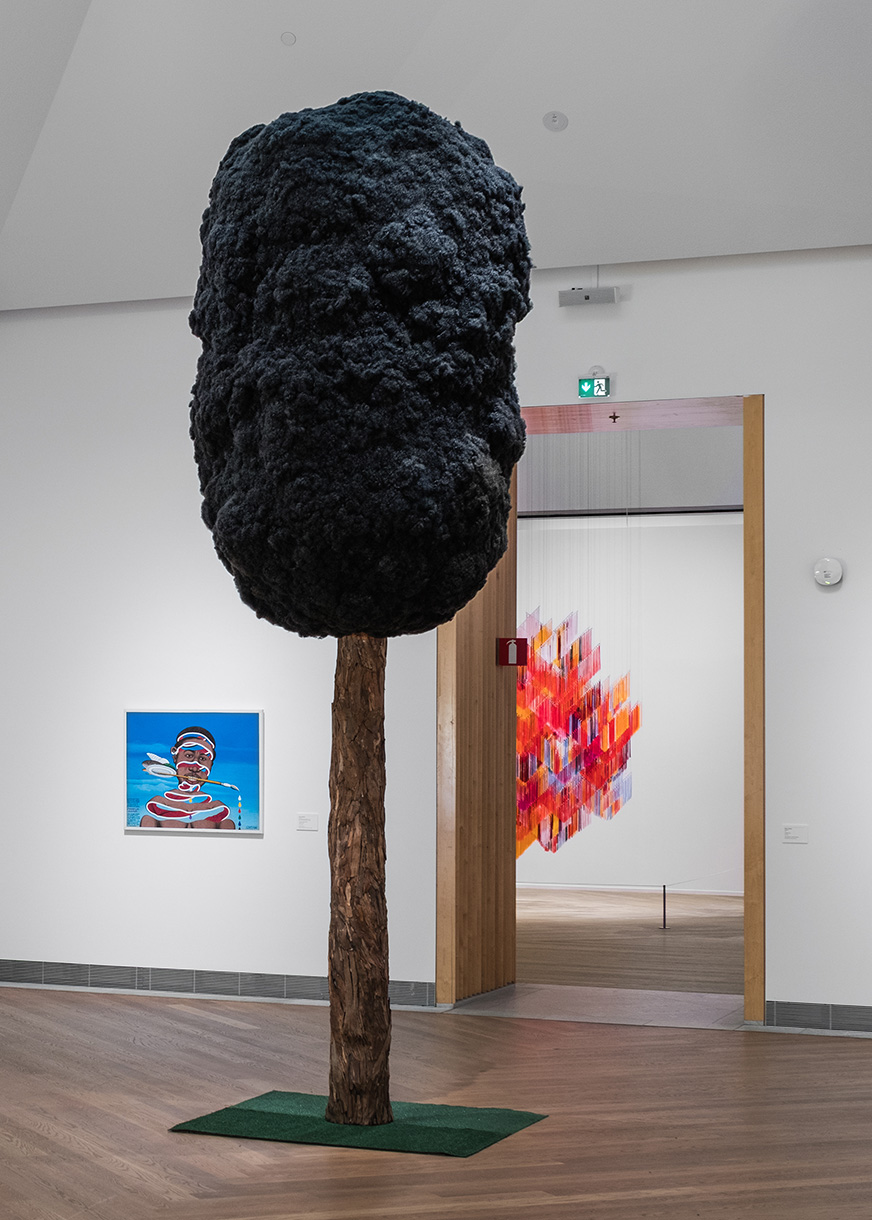
Henry Taylor, Untitled, 2022 © Henry Taylor 2025.
Untitled, 2022
Henry Taylor
Curator Hendrik Folkerts talks about an acquisition that broadens our geographical focus from a historical emphasis on New York to also include Los Angeles.
Runtime: 03:07
Hendrik Folkerts: My name is Hendrik Folkerts and I’m the curator responsible for international contemporary art and also Head of Exhibitions at Moderna Museet.
Henry Taylor is best known as a painter, but in recent years he has also turned to sculpture, giving three-dimensional form to the motifs and figures that inhabit his work. This work takes the shape of a tree: a rough trunk topped with a dense, dark crown that looks as if it were made of Black hair.
The reference is both intimate and cultural. Hair has long been a powerful motif in Black communities, it carries with it histories of identity, care, and creativity. Here, the artist playfully translates that motif into the everyday image of a tree. The tree becomes a place of shelter, shade, and community, while also having within it the associations of hair as something deeply personal and part of a collective history.
Much like in his paintings, the artist turns the everyday into something extraordinary, into history. What strikes me about this work is how it transforms such familiar forms into something that feels at once playful and profound. It’s a reminder of the artist’s skill to honor everyday Black life with both strength and tenderness, whether in his paintings or, as here, in sculptural form.
I first encountered this work at the artist’s survey exhibition at the Museum of Contemporary Art in Los Angeles when I was there in 2022 and was immediately blown away by it. It stages the recent expansion of this artist’s work towards a sculptural form in the most powerful and seemingly effortless way.
For Moderna Museet, the acquisition of this work not only brings an important artist into the collection but also expands our geographical focus — expanding from a historical emphasis, in the 1950s, 60s and 70s, on the art scene of New York, which was a centre at the time, to now include major figures from the Los Angeles art scene, alongside recent acquisitions and exhibitions of the work of John Baldessari, Vaginal Davis and Mike Kelley.
At the same time, the work brings questions of race and class into a direct encounter with form. The sculpture stands before us as something undeniable — a presence that insists on being seen, on taking up space, with the grace and gravity that defines this artist’s practice.